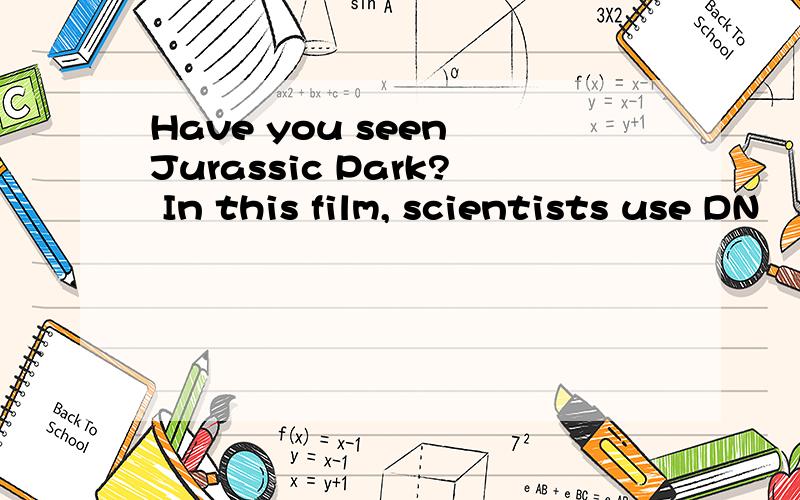Have you seen Jurassic Park? In this film, scientists use DN
来源:学生作业帮 编辑:灵鹊做题网作业帮 分类:英语作业 时间:2024/04/28 00:23:04
| Have you seen Jurassic Park? In this film, scientists use DNA kept for tens of millions of years to clone dinosaurs. They find trouble, however, when they realize that the cloned creatures are smarter and more dangerous than expected. That’s nothing more than a fiction. But could we really clone endangered animals?  To date, the most successful att To date, the most successful att empt to do so was the cloning of a gaur, a rare ox-like animal from southeast Asia. Scientists used a cow to bring the cloned baby gaur, named Noah. Two days after birth, however, Noah died from a common bacterial infection. Other endangered species that may be cloned include the African bongo antelope (邦戈羚羊), the Sumatran tiger, the cheetah (猎豹), and the giant panda. Next, could we really clone extinct animals? empt to do so was the cloning of a gaur, a rare ox-like animal from southeast Asia. Scientists used a cow to bring the cloned baby gaur, named Noah. Two days after birth, however, Noah died from a common bacterial infection. Other endangered species that may be cloned include the African bongo antelope (邦戈羚羊), the Sumatran tiger, the cheetah (猎豹), and the giant panda. Next, could we really clone extinct animals?In theory? Yes. To do this, you need a well-kept source of DNA from the extinct animals such as wool mammoth (毛象), Tasmanian tiger, or even dinosaur, and a closely related species, still living, which could serve as a surrogate mother. In reality? Probably not. On the one hand, it’s not likely that extinct animals’ DNA could survive undamaged for such a long time. Cloning extinct animals as wool mammoth, Tasmanian tiger, or dinosaur is much more difficult due to the lack of properly well-preserved DNA. On the other hand, for example, a gaur can have a cow as a surrogate mother, defin  itely not a monkey. But what about an extinct animals as unique as the panda? What species could possibly serve as a surrogate mother? itely not a monkey. But what about an extinct animals as unique as the panda? What species could possibly serve as a surrogate mother?Cloning presents many exciting possibilities. However, even if extinct animals are brought back, they could not survive in today’s world. Not only do most extinct animals have no habitat to love in, but the other plants and animals they depended on for food may also be gone as well. 1. It can be learned from the text that ________. A. scientists have cloned the African bongo antelope B. both the cheetah and the giant panda live in Asia C. the gaur lives in Asia and is endangered D. the gaur is an extinct species 2. The underlined words “a surrogate mother” probably refer to a female who ----- A. contributes its eggs to another female B. gives birth to a baby for another female C. gives birth to a baby of its own D. cannot give birth to a baby 3. The difficulty in cloning an extinct species is the lack of ______. A. both the well-preserved DNA and plants to live on B. both the habitat to live in and the well-preserved DNA C. both habitat to live in and plants to live on D. both the well-preserved DNA and a surrogate mother 4. In the author’s opinion, it is possible that ______. A. some extinct species may be cloned, but not survive B. extinct species may be cloned and easily survive C. a gaur can hav  e a monkey as a surrogate mother e a monkey as a surrogate motherD. all the extinct species may be cloned 5.Today , have scientists cloned dinosaus? A .Yes B .No C .A lot D.Only one. |

小题1:C
小题2:B
小题3:D
小题4:A
小题5:B
略
Have you seen Jurassic Park? In this film, scientists use DN
have you ever seen this film
求Jurassic Park的film review
“肖申克的救赎”Have you ever seen this film?
1.--Have you seen ________ film Alice in Wonderland?
so i have seen this film t
英语翻译Have you ever seen the film Traveling Bird?In the film,g
——Have you seen this film?——Yes,I have,I saw at
Have you seen the film yet ? 翻译
have the seen film you y
have you ever seen the fascinating film,
This is the first time we (have seen) a film in the ciname t